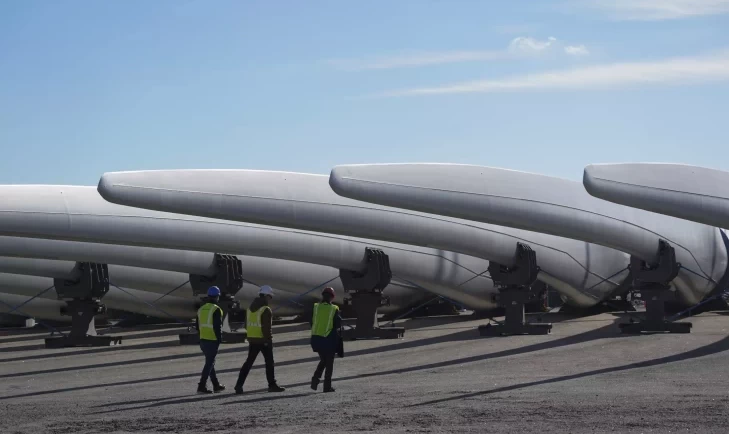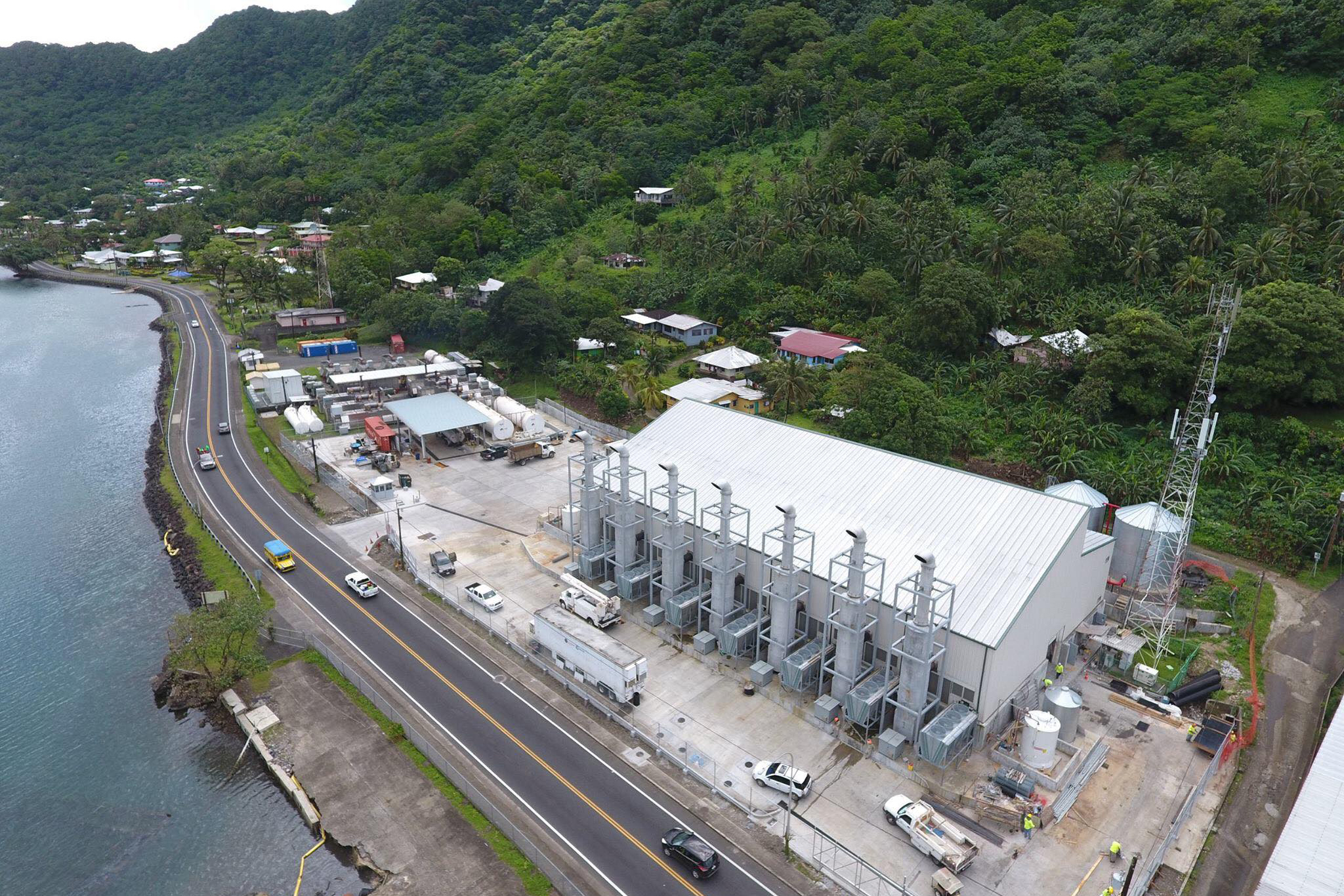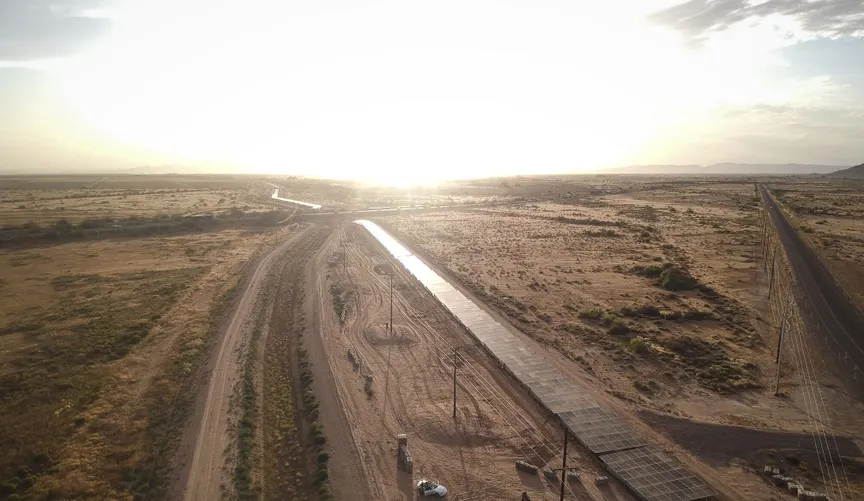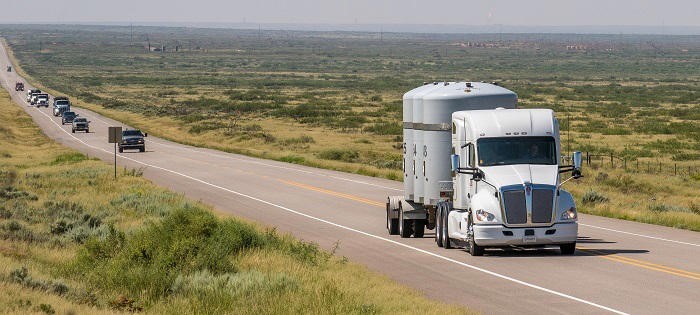07/11/24
Best of the West: Building a climate-ready workforce; western tech hubs; solar canals; storing nuclear waste; Meta in Wyoming; Colorado nuclear energy; studying microplastics; housing firefighters

The Western Governors' Association keeps you updated on the latest news in the West. Here are the top stories for the week starting July 8, 2024. (Photos courtesy of American Samoa Power Authority, KRQE Albuquerque, Seth Wenig, Associated Press).
Communities across the West are facing more frequent and less predictable extreme weather events and natural disasters, from flooding to drought to wildfire and excessive heat. In response, the National Oceanic and Atmospheric Administration (NOAA) established its Climate-Ready Workforce initiative, which has so far committed $60 million to train a professional workforce specifically designed to increase climate resilience.
Of the nine projects selected from a pool of 95 applicants to receive funding, five are located in the West.
In American Samoa, rising sea levels have begun to increase the threat of saltwater intrusion into fresh drinking water supplies. With a population of 45,000, the island’s only agency managing water has faced staff shortages and a lack of trained professionals to tackle challenges like saltwater intrusion. Funding from the NOAA program is designed to confront these challenges by helping train workers in American Samoa to handle these issues and others on the islands.
designed to confront these challenges by helping train workers in American Samoa to handle these issues and others on the islands.
In California, funding will help establish the Los Angeles County Climate Ready Employment Council at Long Beach City College. The program will develop training, internship, and job placement opportunities for workers in the water and solar sector, which are both in need of employees.
Washington and Alaska both received funds to support Tribal climate resilience through Indigenous-led resource management and climate monitoring programs. The program in Alaska will help the Tribal Government of St. Paul Island and a network of indigenous researchers, community leaders, academic institutions, and nonprofits support climate resilient workforce development. It will incorporate Indigenous knowledge of climate research and develop Indigenous-led environmental monitoring techniques.
In Washington, the program will promote a partnership between community colleges and Tribal Nations to work on natural resource management and resilience. Both Tribal and non-Tribal graduates will be trained to contribute to co-stewardship, collaboration, and climate resilience for Tribal communities.
Meena Naik, who researches green jobs for Jobs for the Future, says that the future of climate-related work will rely on “green skills” as opposed to a push for “green jobs.” As the sector moves quickly, she says efforts to train climate-resilient workers should be far-sighted, to give the workforce the skills needed to implement the next phases of the energy transition.
Tech hubs: $504 million was recently announced through the U.S. Department of Commerce’s Economic Development Administration for 12 tech hubs across the country to scale up production of new technologies, from artificial intelligence to clean energy. Projects in the West are set to receive over $150 million in funding across Colorado, New Mexico, Montana, Nevada, and Oklahoma.
Colorado and New Mexico will scale up production of quantum computing to the tune of $41 million, led by Elevate Quantum. In Nevada, the University of Nevada, Reno will work to develop lithium batteries and electric vehicle materials, with a $21 million boost from the federal government.
Oklahoma’s $51 million award will go to the Tulsa Innovation Labs to help develop autonomous systems to be used in a range of applications from agriculture and pipeline inspections to regional transportation. In Montana, the Headwaters Hub will develop smart photonic sensor systems using built-in artificial intelligence and machine learning capacity.
Solar canal: the first solar-covered canal in the U.S. is nearly complete on land owned by the Gila River Indian Community in Arizona. The half-mile-long, 1.3-megawatt pilot system from the engineering firm Tectonicus received $25 million from the federal government to help design and deploy the project.
Proponents of the project say that solar panel-covered canals on federally owned lands could be a win-win. The system is minimally invasive to ecosystems and wildlife, and it does not interfere with farms or rangeland. The comparatively small systems are also easily connected to the local distribution grid, which avoids sticky problems of connecting large projects to the transmission grid.
The canal project mirrors similar designs originally seen in India, but this project will be the first such design to be implemented in the United States. Another solar canal in California broke ground this May and is expected to be completed in 2025.
Nuclear material storage: the U.S. Department of Energy (DOE) announced that the Waste Isolation Pilot Plant (WIPP) near Carlsbad, New Mexico, recently accepted its 14,000th shipment of transuranic nuclear waste. The site in southern New Mexico stores items like tools, rags, and debris that have been contaminated with nuclear material. These items are transported in fortified containers from across the country, with the majority of shipments coming from sites in the West.
WGA has a long history with WIPP, including establishing a Technical Advisory Group in 1989 to convene representatives from western states to ensure “safe and uneventful” transport of nuclear material. WGA then ran the WIPP Technical Advisory Group for the Department of Energy for the better part of two decades.
Meta in Cheyenne: the social media giant Meta announced recently that it will be building an $800 million data center south of Cheyenne, Wyoming. Construction on the center will temporarily employ 1,000 skilled tradespeople and it will be home to 100 permanent operating positions once completed. Local officials estimate that the project will generate millions in revenue and taxes once it’s finished.
The facility will optimize artificial intelligence performance for Meta’s products, which include platforms such as Facebook and Instagram.
“There is no doubt about it: This is a win for Wyoming and will strengthen the local economy,” said Governor Mark Gordon. “This announcement is a testament to our business-friendly climate, and our commitment to innovation and developing a resilient workforce."
Colorado energy growth: new studies released by Governor Jared Polis show the potential for big growth in geothermal and hydrogen energy in Colorado.
The state’s investments in geothermal energy will likely produce utility-scale hot water electricity plants in the next few years, and test drilling and exploratory research shows promising results for large-scale harnessing of underground heat sources. Check out Governor Polis’ Heat Beneath our Feet initiative with WGA, which explored the use of geothermal as a power source.
The study also estimated that hydrogen fuels could provide 10% to 20% of Colorado’s power needs in the future. Hydrogen can be burned directly as a furnace or utility fuel, or be used to run fuel cells without combustion. It can also be stored underground and its applications as a clean shipping fuel for trucking and ocean cargo are also being explored.
Microplastics studies: in Alaska, NASA is directing $5 million to Alaska Pacific University to study microplastics in Alaskan waterways. The funds will establish a microplastics research and education center at the University to identify and study microplastics, which have spread from the waterways around Anchorage out into remote, rural waters.
The money will also help install a state-of-the-art infrared spectrometer, which will allow researchers to get clear pictures of plastics the size of five microns, about the size of a red blood cell.
Housing assistance for wildland firefighters: with wildfires burning in many parts of the West, wildland firefighters are set to receive a bit of relief from the U.S. Forest Service. Forest Service employees living in government-owned housing who meet an income threshold will be refunded half the cost of their rent.
The program is estimated to assist as many as 5,500 employees through the end of fiscal year 2024.